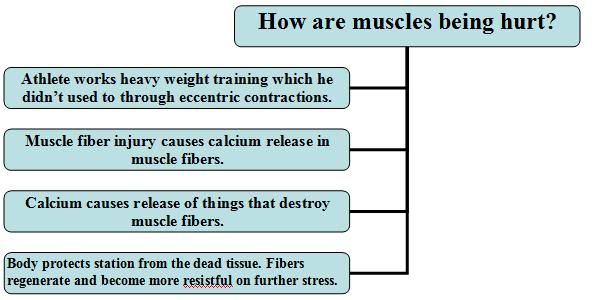Athletes can survive two types of overtrainness. First typ, Basedow’s overtrainness, is related to
sympatic, or parasympatic dominance. It results from sympatic emotional process
of overstimulation or overstress. Second type, Addison ’s overtrainness, is the consequence of
parasympatic inhibition. Between these two, parasympatic or Addison ’s
is harder to discover. In sport disciplines sympatic type is dominant.
Under
normal circumstances, sympatic neural activity is increased as a result of
training and amount of few chormones, like adrenaline(epinephrine),
noradrenaline(norepinephrine), HGH, cortisol and tyroid, stimulus chormone. Researchers
discovered chormones in blood in increased concentrations and concluded that
few of these changes are components of normal stress reaction on training.

Furthermore,
once body is left for few days without proper recovery, physically and
psychologically under too big stress, supercompensation is not further
possible. If it comes to stress due to too high-intensive stimulus or due to
sudden increase of load on training, body products symptoms that are similar to
Basedow disease. These symptoms are very close to the athletes that take part
in high intensity activities that are not connected to the endurance(for
example sprint). Symptoms are: increased heart rate during rest, less dream,
weaker recovery after training, sleep disorder, increased blood pressure in
rest, weakened return of blood pressure on beginning stages after training, increased
infections rate, decreased maximal outgoing power, decreased performance,
weight loss, increased irritability and emotional instability, loss of wish for
training and competition, postular hypotensia and increased injury rate.
Biochemical relation between testosterone and
cortisole is disordered. Researchers
proved that low cortisole production regulation is primary for beginning of
testosterone raise that looks for anabolic process. Decrease in testosterone amounts stops testicular excretion possible
through the way of increased cortisole ratios or other chormonal mechanisms. Amount
of testosterone can return slower to normal basic amounts after serious body
training and it is possible that few days may be necessary for return into
normal. Ratio can be related to catabolic condition that is reported in
Basedow overtrainness syndrome, cause testosterone-cortisole ratio has
implications to include anabolic process for recovery and because it can ask
for more than one day.
Parasympathetic
overtrainness has symptoms that are related to Addison’s disease. Adrenal
glands don’t control chormonal concentrations regularly and though chormone
amounts are dropping, especially cortisole chormone, like tyroid chormone, HGH
and free testosterone.
"Periodization, theory and methodology of training", Tudor Bompa









0 коментара:
Постави коментар